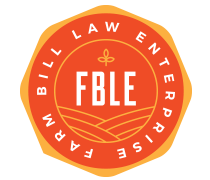Isabel Yin is a law student in the HLS Food Law & Policy Clinic and a guest contributor to this blog.
The Farm, Food, and National Security Act (H.R. 8467)—the House’s version of the new farm bill—has been met with mixed public opinion since its introduction on May 21, 2024. For supporters, H.R. 8467 is “must-pass” legislation to prevent economic instability that would result without a new farm bill. In contrast, critics point to provisions in H.R. 8467 that hinder important protections in areas like SNAP to argue against its passage. H.R.8467 has passed the House Committee on Agriculture and currently awaits a vote in the full House.
Given the nutrition title’s outsized significance within the farm bill and the 17 million American families impacted by food insecurity, much of the public discourse has focused on H.R. 8467’s changes to that title. While commentators have noted that the bill does increase SNAP accessibility on a few fronts (e.g., by excluding certain income for older youth in their benefit calculations and repealing a policy barring people convicted of felony drug charges from receiving benefits), they argue that these benefits are far outweighed by the long-term costs imposed by H.R. 8467. Most importantly, the bill’s restriction on reevaluations of the Thrifty Food Plan (TFP) — the USDA’s dietary plan used to calculate SNAP benefit levels—will cut an estimated $30 billion from SNAP over the next decade. Section 4002 of the 2018 Farm Bill mandated reevaluations of the TFP every five years, and the USDA’s reevaluation of the plan in 2021 modernized the TFP to reflect actual food costs and dietary requirements, leading to a corresponding increase in SNAP benefits. Removing the TFP’s mandatory reevaluation requirement all but guarantees the future inadequacy of SNAP benefits as they would not account for the true costs of and changes in nutritional needs.
H.R. 8467 fails to promote beneficial food policy in other ways as well. For one, in allowing states to outsource SNAP eligibility determinations to private companies, the bill ignores the empirical experiences of SNAP recipients who have dealt with increased delays, errors, and costs after such privatization. Section 4110 of H.R. 8467 will also likely cause oversurveillance of SNAP recipients through its directive that the USDA re-issue rules surrounding inter-state data matching for dual enrollment prevention. Finally, the bill declines to reauthorize an authority that reimburses recipients for stolen SNAP benefits and otherwise neglects to address or rectify many pressing food issues like the inability to purchase hot foods with SNAP benefits.
In light of these concerns, H.R. 8467’s minor improvements to SNAP eligibility in the nutrition title and its additional investments in some programs like the Community Food Projects grants, The Emergency Food Assistance Program (TEFAP), and the Gus Schumacher Nutrition Incentive Program (GusNIP) (which incentivizes healthy produce purchases with SNAP) —cumulatively, amounting to less than half of the $30 billion reduction in SNAP — are overshadowed by its many shortcomings. The consequences of an expiration of the 2018 Farm Bill’s authorizations are weighty ones, but so are those that would follow from the hasty passage of a bill with such serious implications. As food insecurity continues to rise nationwide, Congress must seriously consider the farm bill’s impacts on vulnerable families that increasingly require its food assistance before it passes H.R. 8467 at the expense of SNAP’s future viability.
The views and opinions expressed on the FBLE Blog are those of the authors and do not necessarily reflect the official policy or position of FBLE. While we review posts for accuracy, we cannot guarantee the reliability and completeness of any legal analysis presented; posts on this Blog do not constitute legal advice. If you discover an error, please reach out to contact@farmbilllaw.org.


